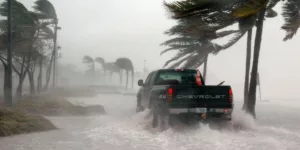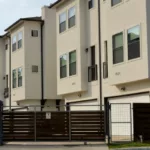The Florida Division of Emergency Management says that flooding is one of Florida’s most frequent hazards. The Property Advocates says this type of threat isn’t relegated to one time of year or one particular part of the state.
That’s because there is no single type of flood. This hazard can occur in a number of different ways, and just about all of them affect different parts of Florida.
It’s important to understand the different types of floods that are common in Florida so that you can know whether your home might be threatened by one of these hazards. Below is a list of the common types of flooding hazards in Florida.
Flash Flooding
Flash floods are named as such because water levels can rise instantly — almost in a flash. In general, they will develop within six hours following the cause of the flood. In other words, flash flooding would occur within six hours if torrential rain occurs.
Flash flooding consists of water levels rising rapidly, especially threatening low-lying areas. They can happen because of heavy rains or a dam failure.
What’s concerning about flash flooding is that it can occur far from where the actual event occurred. For example, heavy rainfall in one area can lead to flash flooding in another during a drought, as rainwater runs downhill because it can’t seep into the dry ground fast enough.
River Flooding
River levels aren’t constant. They can ebb and flow based on a variety of factors. When the water level rises above the banks, it can flow out and cause catastrophic flooding.
River flooding can occur at minor, moderate, or major levels, the National Weather Service’s three designations. Minor flooding typically affects just low-lying areas near the river’s bank, while major river flooding can affect large swaths of area far away from the river itself.
Tropical Systems and Coastal Flooding
Florida faces tropical storm systems and resulting coastal flooding often, unfortunately. Atlantic hurricanes and tropical storms can bring sudden deluges of rain and extremely damaging storm surges from heavy winds.
Many people who aren’t from Florida might think that the biggest flooding threat from a tropical system would be the rain that it brings. But many Floridians know that’s not necessarily the case.
The heavy winds from tropical storm systems can cause major coastal flooding, as storm surges and large waves can bring significant water inland. This water can flow from the ocean through rivers and tributaries, knocking out pathways and infrastructure in the process.
Dam Breaks/Levee Failure
Dams and levees are built to improve our lives, but failures in these structures can cause significant flooding damage. The Property Advocates says that this is one of the most concerning types of flooding, if only because there’s often no warning at all that it’s occurring.
If a dam breaks or a levee fails, for example, literal tons of water can soon find its way where it’s not supposed to be. It doesn’t have to be that catastrophic, but even minor flooding from dam breaks and levee failures can cause significant damage.
About The Property Advocates
The Property Advocates, P.A. is a full-service Florida insurance law firm specializing in property insurance claims. With offices in Miami, Orlando, and Tampa, The Property Advocates team consists of nearly 25 experienced attorneys with decades of combined experience who are compassionate, knowledgeable, and not afraid to go to trial for their clients. They have a successful track record of resolving complicated property insurance claims and getting their clients the fair compensation they deserve.








